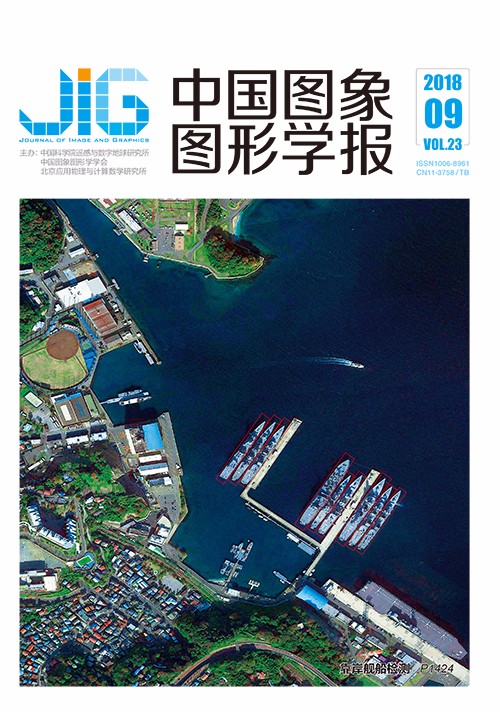
深度全卷积网络的IVUS图像内膜与中—外膜边界检测
袁绍锋1,2, 杨丰1,2, 徐琳3, 刘树杰4, 季飞4, 黄靖1,2(1.南方医科大学生物医学工程学院, 广州 510515;2.南方医科大学广东省医学图像处理重点实验室, 广州 510515;3.广州军区广州总医院心血管内科, 广州 510010;4.华南理工大学电子与信息学院, 广州 510641) 摘 要
目的 心血管内超声(IVUS)图像内膜和中—外膜(MA)轮廓勾画是冠脉粥样硬化和易损斑块定量评估的必要过程。由于存在斑点噪声、图像伪影和各类斑块,重要组织边界的自动分割是一个非常困难的任务。为此,提出一种用于检测20 MHz心电门控IVUS图像内膜和MA边界方法。方法 首先利用深度全卷积网络(DFCN)学习原始IVUS图像与所对应手动分割图像之间映射,预测出目标或者背景的概率图,实现医学图像语义分割。然后在此基础上,结合心血管先验形状信息,采用数学形态学闭、开操作,平滑内膜和MA边界,降低分割过程中错误分类像素或区域的影响。结果 针对来自10位病人的IVUS图像及其标注信息所组成的435幅国际标准公开数据集,从线性回归、Bland-Altman分析和面积交并比(JM)、面积差异百分比(PAD)、Hausdorff距离(HD)、平均距离(AD)等性能指标上,评价本文方法。实验结果表明,算法检测结果与手动勾画结果的相关性可达到0.94,其超过94.71%的结果落在95%置信区域内,具有良好一致性。内膜和MA边界的AD指标分别为:0.07 mm和0.08 mm;HD指标分别为:0.21 mm和0.30 mm。JM指标分别为0.92和0.93;PAD指标分别为5%和4%。此外,对临床所采集的100幅IVUS图像进行了测试,证明本文学习的模型在跨数据集上具有较好的泛化能力。结论 与现有的国际算法比较,本文方法提高了各类斑块、声影区域和血管分支等因素的识别能力,不受超声斑点的影响,能准确地、可重复地检测出IVUS图像中的关键目标边界。
关键词
Lumen and media-adventitia borders detection in IVUS images using deep fully convolutional networks
Yuan Shaofeng1,2, Yang Feng1,2, Xu Lin3, Liu Shujie4, Ji Fei4, Huang Jing1,2(1.School of Biomedical Engineering, Southern Medical University, Guangzhou 510515, China;2.Guangdong Provincial Key Laboratory of Medical Image Processing, Southern Medical University, Guangzhou 510515, China;3.Department of Cardiology, Guangzhou General Hospital of Guangzhou Military Command, Guangzhou 510010, China;4.School of Electronic and Information Engineering, South China University of Technology, Guangzhou 510641, China) Abstract
Objective The delineation of lumen and media-adventitia (MA) borders in intravascular ultrasound (IVUS) images is necessary for quantitative assessment of coronary atherosclerosis and vulnerable plaques. Automatic segmentation for detecting these important borders represents a difficult task due to ultrasonic speckle, various artifacts and atherosclerotic plaques. In this paper, we present a simple yet effective fully automated methodology for the detection of lumen and MA borders in 20 MHz ECG-gated intravascular ultrasound frames. Method The delineation of lumen and MA borders in IVUS images was solved by two major stages:region segmentation and border refinement in proposed method, or key point detection and curve fitting in previous approaches. Different from the second class solution, the first class solution was more adopted because borders from most IVUS images to be analyzed are able to be observed. Most of automatic detection algorithms for lumen and media-adventitia border from IVUS images is lack of consideration of professional clinicians observing IVUS images, identifying borders of interest and delineating the outline of organs or tissues. However, computer algorithms based on machine learning, computer vision and other emerging intelligent technologies extract hierarchical and discriminative deep features by learning given training dataset, simulate how clinicians recognize lumen and media-adventitia border, therefore often obtain better segmentation results. In view of problems of the existing automatic algorithms for detecting lumen and media-adventitia border, this work simulates the process of clinicians identifying the lumen and media-adventitia border, and proposes an automatic algorithm combining a priori shape information of coronary artery and deep convolutional networks. First the proposed approach uses deep fully convolutional networks (DFCN) to directly learn mappings between raw IVUS images and their corresponding manual segmentations in order to predict an object or background probability map across the whole image. Then, on basis of the above coarse segmentation and the prior information of vessel appearance we employed mathematical morphological post-processing open or close operator and some simple image processing steps to smooth the extracted lumen and MA borders from the output of DFCN. The border refinement stage is to eliminate misclassified pixels or regions in the stage of medical image semantic segmentation. Result Our method is evaluated on a publicly available dataset that consists of 435 IVUS images in vivo acquired from ten patients in different hospital or medical center using linear regression, Bland-Altman analysis and several measure metrics such as Jaccard Measure (JM), Percentage of Area Difference (PAD), Hausdorff Distance (HD) and Average Distance (AD). The obtained results demonstrate that our method is accurate, reliable and capable of detecting lumen and MA borders with good correlation r=0.94, good agreement with larger than 94.71% of results within the 95% confidence interval, small average distance:lumen 0.07 mm, MA 0.08 mm, and small Hausdorff distance:lumen 0.21 mm, MA 0.30 mm. JMs of lumen and MA borders are 0.92 and 0.93, respectively. PADs of lumen and MA borders are 5% and 4%, respectively. In addition, we apply the trained model on the 100 IVUS images collected from the Guangzhou General Hospital and obtain successful detection results. Conclusion Compared with existing eight international algorithms, it has improved capability of recognizing different kinds of plaques, acoustic shadow, branches of vessel, and more accurately and reproducibly detected borders of key organ in IVUS images.
Keywords
medical image analysis deep learning deep fully convolutional networks prior shape information intravascular ultrasound lumen border detection media-adventitia border detection
|



 中国图象图形学报 │ 京ICP备05080539号-4 │ 本系统由
中国图象图形学报 │ 京ICP备05080539号-4 │ 本系统由